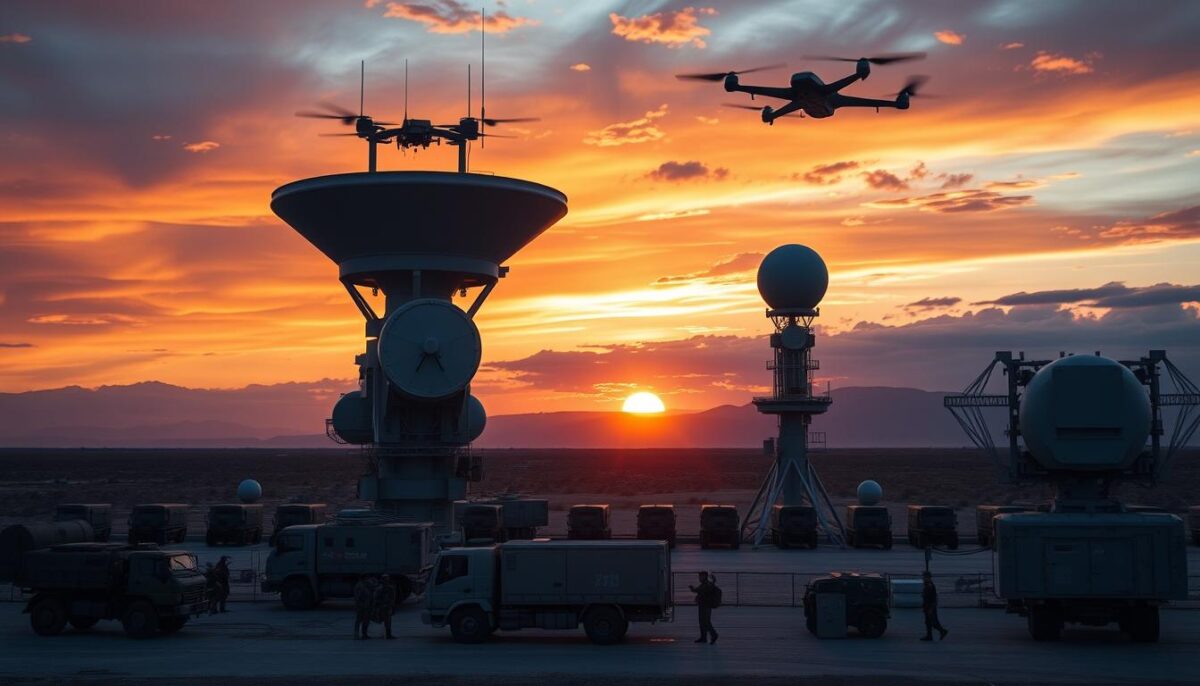Radar technology has become a cornerstone of modern defense systems, playing a vital role in enhancing military surveillance and security measures. As threats evolve, the need for sophisticated radar advancements is more crucial than ever. These systems not only improve the ability to detect and monitor potential risks but also integrate seamlessly with other technologies to bolster national defense strategies. The ongoing evolution of radar technology continues to support military operations by addressing the complexities of contemporary warfare.
The Evolution of Radar Technology in Defense
The journey of radar technology evolution in defense reflects a significant transformation shaped by various historical milestones and advancements in military technology. Understanding this journey offers vital insights into how modern radar systems have become integral to national security, enhancing situational awareness and operational efficiency.
Historical Milestones in Radar Development
Radar technology’s origins trace back to the early to mid-20th century, notably around World War II. During this period, significant developments occurred, such as:
- The introduction of the first operational radar systems that enabled detection of enemy aircraft and naval vessels.
- Innovations in signal processing which improved target tracking accuracy and improved response times for military operations.
- The transition from analog systems to digital technology, marking a turning point in radar history.
These milestones laid the groundwork for subsequent advancements, setting the stage for what would follow in radar technology evolution.
Technological Advances Shaping Modern Warfare
Today, modern radar systems reflect remarkable technological progress driven by ongoing research and innovation. Key advancements include:
- Phased array radar technology allows for electronic scanning, enhancing the ability to track multiple targets simultaneously.
- Improved digital processing techniques that contribute to higher resolution imaging and more precise data analysis.
- Integration with other advanced military systems, creating a comprehensive and synchronized battlefield awareness.
These military technology advancements have drastically changed the landscape of warfare and defense strategies, highlighting the crucial role of radar systems in modern military operations.
Radar Technology in Defense: Enhancing Security and Surveillance
Radar technology plays a pivotal role in military operations, demonstrating its versatility across multiple applications. The effectiveness of military radar applications relies on advanced radar systems working in concert with other cutting-edge surveillance technologies.
Key Applications in Military Operations
From maintaining air traffic control to missile defense, radar technology is at the forefront of military operations. Key applications include:
- Surveillance Optimization: Continuous monitoring of airspace to track potential threats.
- Missile Defense: Real-time tracking of incoming projectiles to ensure national security.
- Reconnaissance: Gathering critical intelligence on enemy movements and locations.
- Target Acquisition: Identifying and classifying targets for effective engagement.
Integration with Other Surveillance Technologies
Integrating radar systems with other surveillance technologies, such as satellite imaging and radar and drone technology, significantly enhances operational capabilities. This integration fosters an environment conducive to:
- Comprehensive Situational Awareness: Providing military personnel with a holistic view of the battlefield.
- Improved Data Analysis: Leveraging artificial intelligence and machine learning to analyze vast amounts of data rapidly.
- Enhanced Threat Assessment: Refining decision-making processes through real-time data interpretation.

| Application | Technology Used | Benefits |
|---|---|---|
| Air Traffic Control | Radar Systems | Increased safety and efficiency |
| Missile Defense | Integrated Defense Systems | Real-time threat interception |
| Reconnaissance | Satellite Imaging | Enhanced information gathering |
| Drone Surveillance | Radar and Drone Technology | Increased operational reach |
Challenges in Radar Technology Implementation
The successful implementation of radar technology in defense systems faces numerous challenges. These challenges stem from environmental factors and the rising cybersecurity threats that radar systems encounter. Understanding these obstacles is crucial for developing effective strategies that can enhance radar performance and security.
Environmental Factors Affecting Radar Performance
Weather conditions, terrain, and electromagnetic interference significantly contribute to radar challenges. For instance, rain, fog, or heavy snowfall can disrupt signals, thereby affecting the environmental impact on radar accuracy. Additionally, mountainous regions may obstruct radar waves, reducing detection efficiency. The presence of electronic devices and other communication systems produces interference, further complicating radar operations. Addressing these environmental factors is essential for maintaining reliable performance in complex defense environments.
Cybersecurity Threats to Radar Systems
The digital transformation of radar technology introduces substantial radar cybersecurity issues. These systems face threats from hacking, unauthorized access, and electronic warfare tactics aimed at disrupting operations. Defense technology vulnerabilities can lead to significant risks, compromising the integrity of critical information gathered by radar systems. To counter these threats, advanced encryption techniques, and proactive monitoring solutions are being developed. Staying ahead in the cybersecurity landscape is vital for safeguarding radar systems and ensuring the safety of defense operations.
The Future of Radar Technology in Defense
The future of radar looks promising, with numerous emerging radar technologies poised to transform military operations. Innovations such as quantum radar promise unprecedented accuracy and capabilities, potentially revolutionizing the way defense systems detect threats. This technology could significantly enhance situational awareness and reduce the chances of detection by adversaries, ensuring a strategic edge in combat situations.
Advancements in material science and nanotechnology are also shaping the future of radar systems. These developments enable the creation of lighter, more portable radar solutions without sacrificing efficacy. As forces become more mobile, the adaptability of these systems will play a crucial role in successful missions across varied terrains and environments. Furthermore, the integration of radar with next-generation defense systems and robotics is anticipated to streamline operations, making them more efficient and automated.
Government and private sector investments in defense innovation further indicate a commitment to advancing radar technology. By focusing on cutting-edge research and development, stakeholders aim to push the boundaries of what’s possible, ensuring that military surveillance remains ahead of potential threats. As these trends continue to unfold, the future of radar will undoubtedly play a pivotal role in securing national interests and maintaining military readiness.




